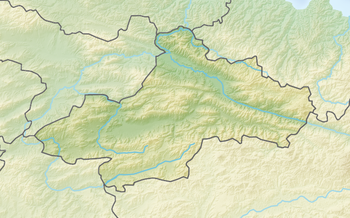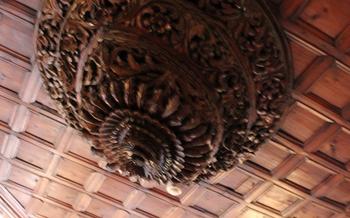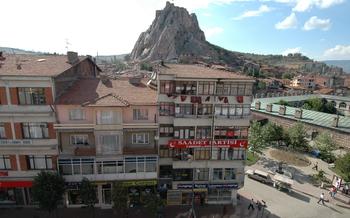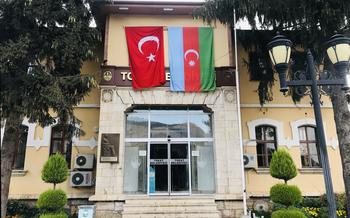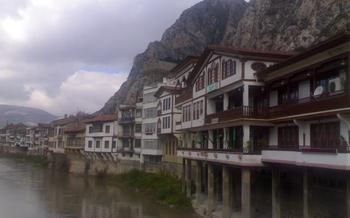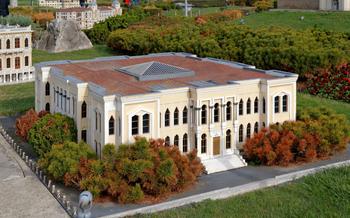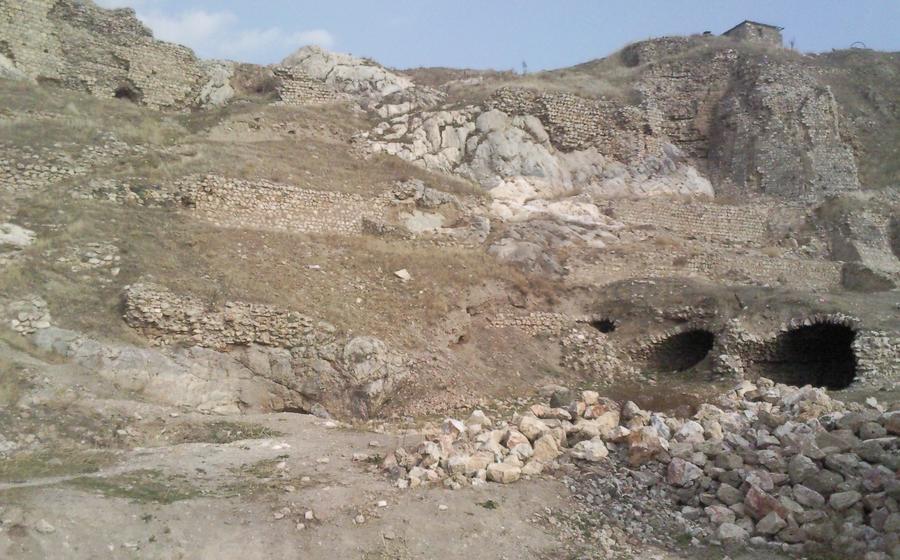
Kemer Bridge
- A Journey to Kemer Bridge: Unveiling Tokat's Architectural Gem
- Historical Significance: A Bridge Through the Ages
- Architectural Marvel: A Masterpiece of Design
- Scenic Beauty: A Bridge Amidst Nature's Splendor
- Cultural Importance: A Symbol of Tokat's Heritage
- Location and Accessibility: A Bridge Connecting History and Nature
- A Step Back in Time: Exploring the Bridge's Rich History
- Architectural Masterpiece: Unraveling the Bridge's Design
- Nature's Canvas: The Bridge's Enchanting Surroundings
- Cultural Significance: A Symbol of Tokat's Heritage
- Unforgettable Experiences: Activities at the Kemer Bridge
- Practical Tips for Visitors: Planning Your Visit
- Capturing the Moment: Photography at the Bridge
- History Buffs' Paradise: Exploring the Surrounding Area
- Preservation Efforts: Protecting the Bridge's Legacy
- Hidden Gems: Exploring Lesser-Known Aspects of the Bridge
- Sustainability Initiatives: Preserving the Bridge's Environment
- Accessibility for All: Ensuring Inclusivity
- Insider Tip: Unveiling a Hidden Treasure
A Journey to Kemer Bridge: Unveiling Tokat's Architectural Gem
In the heart of Tokat, a city steeped in history, lies a testament to the ingenuity and artistry of bygone eras – the Kemer Bridge. This architectural wonder, reaching across the tranquil waters of the Tokat River, has stood as a silent witness to the passage of time, embodying Tokat's rich cultural heritage.
Historical Significance: A Bridge Through the Ages
The Kemer Bridge's origins can be traced back to the Roman Empire, a period when Tokat served as a strategic crossroads along ancient trade routes. Built during the 2nd century AD, the bridge played a pivotal role in facilitating commerce and connecting diverse cultures. Over the centuries, it has endured the rise and fall of empires, bearing witness to the ebb and flow of history.
Architectural Marvel: A Masterpiece of Design
The Kemer Bridge stands as an extraordinary feat of engineering, showcasing the remarkable architectural prowess of its builders. Its distinctive arched design, spanning over multiple piers, exudes an air of strength and resilience. Constructed using local stone and featuring intricate carvings, the bridge showcases the meticulous craftsmanship of its creators.
Scenic Beauty: A Bridge Amidst Nature's Splendor
Beyond its historical significance, the Kemer Bridge is a true natural wonder. Set amidst the picturesque landscapes of Tokat, the bridge offers breathtaking views of the meandering Tokat River, surrounded by lush greenery. The serene atmosphere and stunning vistas make it an ideal spot for contemplation and relaxation.
Cultural Importance: A Symbol of Tokat's Heritage
The Kemer Bridge holds immense cultural significance for the people of Tokat. It serves as a symbol of their rich heritage, a tangible link to the city's past. Over the years, the bridge has become a beloved landmark, a source of pride and identity for the local community.
Location and Accessibility: A Bridge Connecting History and Nature
The Kemer Bridge stands proudly over the Tokat River in the heart of Tokat, Turkey. To reach this architectural marvel, visitors can take a leisurely stroll along the picturesque riverbanks, enjoying the tranquil ambiance and lush greenery. Alternatively, for those arriving by car, ample parking space is available in designated areas near the bridge. From the parking lots, a short and scenic walk leads to the bridge, offering a chance to appreciate the surrounding natural beauty before stepping onto this historic structure.
A Step Back in Time: Exploring the Bridge's Rich History
The Kemer Bridge stands as a testament to the enduring legacy of Tokat, its roots firmly planted in the annals of time. Its construction dates back to the Roman Empire, a period when engineering marvels shaped the landscape of ancient civilizations. Through the centuries, the bridge has borne witness to the rise and fall of empires, the ebb and flow of cultures, and the ever-changing tapestry of human history.
During the Ottoman Empire, the Kemer Bridge served as a vital crossing point, connecting the vast territories that stretched across continents. Merchants, travelers, and armies alike traversed its sturdy arches, their footsteps echoing through the ages. The bridge's strategic location facilitated trade, communication, and the exchange of ideas, contributing to the region's cultural and economic prosperity.
Today, the Kemer Bridge stands as a protected historical monument, a tangible reminder of Tokat's rich past. It is a source of pride for the local community, who recognize its significance as a symbol of resilience, continuity, and the enduring spirit of Tokat. The bridge's story is interwoven with the lives of countless individuals who have crossed its path, each leaving their own unique mark on its storied history.
Architectural Masterpiece: Unraveling the Bridge's Design
The Kemer Bridge stands as a testament to the remarkable engineering prowess of its builders. Its unique structure, featuring multiple arches supported by sturdy piers, sets it apart from other bridges in the region. Constructed using local stones, the bridge showcases the builders' mastery of materials and their ability to create a durable and visually appealing structure. The use of innovative techniques, such as interlocking stones and vaulted arches, ensures the bridge's stability and longevity, allowing it to withstand the test of time and natural elements.
Comparing the Kemer Bridge to other historical bridges reveals both similarities and differences. While it shares certain design elements with other arched bridges, such as the Roman aqueduct bridges, its unique combination of features and its adaptation to the local environment make it a distinct masterpiece. The bridge's multiple arches, for example, provide additional support and stability, making it particularly well-suited to the region's seismic activity.
Overall, the Kemer Bridge stands as an architectural marvel, showcasing the ingenuity and skill of its builders. Its unique design, the use of local materials, and its ability to withstand the passage of time make it a true testament to human creativity and engineering prowess.
Nature's Canvas: The Bridge's Enchanting Surroundings
The Kemer Bridge is not just an architectural marvel; it is also a testament to the beauty of nature. The bridge spans the Tokat River, and the views from above are simply breathtaking. The river's emerald-green waters flow swiftly beneath the bridge, creating a mesmerizing spectacle. The lush greenery that adorns the riverbanks adds to the bridge's charm, creating a picturesque landscape that is sure to leave you spellbound.
If you're lucky, you might even spot some local wildlife during your visit. The Tokat River is home to a variety of fish, birds, and other wildlife. Keep an eye out for ducks, geese, herons, and other waterfowl that frequent the area. You might also see turtles basking in the sun on the riverbanks or fish jumping out of the water.
The bridge's surroundings offer a peaceful and tranquil atmosphere, making it the perfect place to relax and unwind. Take a leisurely stroll along the bridge, find a peaceful spot to sit and contemplate, or simply soak in the beauty of the natural scenery. The Kemer Bridge is a place where you can truly appreciate the beauty of nature and escape the hustle and bustle of everyday life.
Cultural Significance: A Symbol of Tokat's Heritage
The Kemer Bridge stands as a proud symbol of Tokat's rich cultural heritage, evoking a sense of pride and identity among the local community. Its enduring presence has witnessed countless historical events and gatherings, weaving it into the fabric of Tokat's story. The bridge's architectural influence is evident in other structures and styles throughout the city, showcasing its profound impact on the local landscape. As a testament to its enduring significance, the bridge is often depicted in artworks, literature, and local folklore, serving as a tangible link between Tokat's past, present, and future.
Unforgettable Experiences: Activities at the Kemer Bridge
A visit to the Kemer Bridge offers a range of unforgettable experiences, allowing visitors to immerse themselves in the bridge's history and natural beauty. One of the most enjoyable activities is simply taking a leisurely stroll along the bridge, savoring the tranquility and taking in the stunning views of the Tokat River and the surrounding landscape. The bridge provides a unique perspective from which to appreciate the river's meandering course and the lush greenery that adorns its banks.
For photography enthusiasts, the Kemer Bridge presents a wealth of opportunities to capture its architectural grandeur and picturesque surroundings. The bridge's unique structure, with its multiple arches and piers, creates striking compositions, while the play of light and shadow throughout the day adds to its visual appeal. Visitors can experiment with different angles and perspectives to create stunning photographs that will serve as lasting mementos of their visit.
For those seeking a moment of peace and contemplation, the Kemer Bridge offers an ideal setting. Visitors can find a secluded spot along the bridge or on the riverbank, where they can relax, soak in the tranquil atmosphere, and let the gentle sounds of the river wash away their worries. The bridge's timeless beauty and serene surroundings create a perfect ambiance for reflection and introspection.
In addition to these activities, visitors to the Kemer Bridge can also enjoy the local cuisine by trying traditional Turkish dishes at nearby restaurants or cafes. The flavors and aromas of Turkish cuisine, with its rich blend of spices and fresh ingredients, are sure to tantalize the taste buds and offer a culinary adventure that complements the historical and cultural experience of visiting the bridge.
Practical Tips for Visitors: Planning Your Visit
To ensure a smooth and enjoyable visit to the Kemer Bridge, consider the following practical tips:
-
Ideal time to visit: For the most pleasant weather conditions, plan your visit during the spring or autumn months, when temperatures are moderate. In the summer, the heat can be intense, while winters can be cold and snowy.
-
Dress code: Respect the cultural norms by dressing modestly and appropriately. Avoid revealing or overly casual clothing, especially when visiting during religious holidays or ceremonies.
-
Accessibility considerations: The bridge is generally accessible to visitors of all abilities. However, there are some cobblestone pathways and uneven surfaces, so it's advisable to wear comfortable shoes. If you have specific accessibility needs, it's recommended to contact the local tourism office for assistance.
-
Guided tours: Guided tours of the bridge and surrounding area are available, offering insights into the history, architecture, and cultural significance of the site. Tours can be arranged through local tour operators or the Tokat tourism office.
Capturing the Moment: Photography at the Bridge
The Kemer Bridge offers a myriad of opportunities for photography enthusiasts, with its picturesque surroundings and unique architectural features. To capture the bridge's beauty at its best, consider arriving early in the morning or late in the afternoon, when the soft, golden light illuminates the structure and creates a magical ambiance. Experiment with different angles and perspectives to find unique compositions that showcase the bridge's grandeur. For a breathtaking panorama, head to the nearby hilltop for an elevated view that encompasses the bridge, the river, and the surrounding landscape.
Tripods are highly recommended to ensure sharp and steady shots, especially when using telephoto lenses to capture intricate details. Remember to adjust your camera settings accordingly, experimenting with shutter speed and aperture to achieve the desired depth of field and motion blur effects.
For those interested in capturing the bridge's reflection in the river, the best time to visit is after a rainfall, when the water level is higher and the reflections are more pronounced.
To ensure a responsible and respectful photography experience, be mindful of other visitors and avoid disrupting their enjoyment of the bridge. Additionally, check for any photography restrictions or permit requirements before setting up your equipment.
History Buffs' Paradise: Exploring the Surrounding Area
The Kemer Bridge is not just an isolated historical site; it is surrounded by a wealth of other historical landmarks and attractions that beckon history buffs to explore. Within easy walking distance of the bridge, visitors can discover ancient ruins, delve into museums, and immerse themselves in the rich cultural heritage of Tokat.
One of the must-visit sites is the Tokat Castle, an imposing fortress that has stood watch over the city for centuries. Its towering walls and intricate architecture offer a glimpse into Tokat's glorious past. The castle's ramparts provide breathtaking panoramic views of the city and the surrounding countryside, making it the perfect spot to capture stunning photographs.
For those fascinated by the intricacies of local culture, the Tokat Museum is a treasure trove of knowledge. This museum houses an extensive collection of artifacts, historical documents, and traditional crafts that showcase the diverse cultural heritage of the region. Visitors can learn about Tokat's vibrant past, its contributions to Turkish history, and the unique customs and traditions that have shaped the city over the centuries.
Tokat is also renowned for its vibrant festivals and events that celebrate its rich cultural heritage. The annual Tokat International Festival of Arts and Culture is a highlight, featuring a dazzling array of performances, exhibitions, and workshops that showcase the talents of local and international artists. Visitors can immerse themselves in traditional music, dance, theater, and handicrafts, gaining a deeper understanding of Tokat's cultural tapestry.
Preservation Efforts: Protecting the Bridge's Legacy
The Kemer Bridge stands as a testament to the enduring spirit of Tokat's history and culture. Recognizing its immense significance, concerted efforts are underway to preserve and maintain this architectural marvel for generations to come. At the forefront of these endeavors are dedicated conservationists, historians, and local authorities who have implemented a comprehensive strategy to safeguard the bridge's legacy.
Regular inspections and structural assessments are conducted to identify any potential vulnerabilities or areas requiring attention. Skilled artisans and engineers employ traditional techniques, using materials that match the bridge's original construction, to meticulously restore and repair damaged sections.
The community plays a vital role in protecting the bridge's heritage. Through awareness campaigns and educational programs, locals are encouraged to actively participate in preservation efforts. By reporting any signs of damage or vandalism, they serve as vigilant guardians of this cherished landmark.
Despite the ongoing care and maintenance, the bridge faces several challenges and threats. Natural elements, such as erosion and weathering, can gradually deteriorate the structure over time. Additionally, the increasing number of visitors and the potential impact of tourism must be carefully managed to ensure that the bridge's integrity is not compromised.
To address these challenges, long-term plans are in place to further enhance the bridge's resilience and sustainability. These include the development of a comprehensive management plan, the establishment of designated conservation zones, and the implementation of eco-friendly practices to minimize the environmental impact of tourism.
By combining the expertise of conservationists, the dedication of the community, and a forward-thinking approach, the Kemer Bridge will continue to stand as a symbol of Tokat's rich history, inspiring awe and wonder for years to come.
Hidden Gems: Exploring Lesser-Known Aspects of the Bridge
Venture beyond the main tourist spots and discover the hidden gems that surround the Kemer Bridge. Explore secret nooks and crannies that offer unique perspectives of the bridge and its surroundings. Uncover lesser-known stories and legends associated with the bridge, passed down through generations by the local community. Embark on off-the-beaten-path experiences by exploring nearby natural attractions and hidden gems, such as secluded waterfalls, picturesque hiking trails, and tranquil fishing spots. Engage with local guides who can provide insider knowledge and personalized experiences, ensuring you discover the true essence of the Kemer Bridge and its rich history.
Sustainability Initiatives: Preserving the Bridge's Environment
The preservation of the Kemer Bridge extends beyond its physical structure, encompassing its natural surroundings as well. Sustainability initiatives play a crucial role in ensuring the bridge's longevity and protecting its delicate ecosystem.
Efforts to minimize environmental impact and promote sustainability in the area include the implementation of eco-friendly practices. Proper waste disposal systems have been established to prevent pollution and maintain the cleanliness of the bridge and its environs. Initiatives to reduce air and water pollution are also in place, ensuring that the bridge's environment remains pristine.
Protecting the local flora and fauna is a priority, promoting responsible tourism that respects the delicate balance of nature. Conservation efforts focus on preserving the area's biodiversity and promoting responsible practices among visitors. By embracing sustainability, the Kemer Bridge and its surroundings can be enjoyed by generations to come.
Accessibility for All: Ensuring Inclusivity
The Kemer Bridge is committed to providing an inclusive and accessible experience for all visitors. Wheelchair-accessible routes have been implemented to ensure that individuals with disabilities can effortlessly navigate the bridge and its surroundings. Clear signage and information boards displayed in multiple languages offer guidance and assistance to visitors from diverse backgrounds. Furthermore, the staff is trained to provide support and assistance to visitors with special needs, ensuring that everyone can fully enjoy the bridge's historical and cultural significance. By promoting an inclusive environment, the Kemer Bridge welcomes visitors from all walks of life to immerse themselves in the rich heritage and beauty of Tokat.
Insider Tip: Unveiling a Hidden Treasure
Secret viewpoint: Venture off the beaten path to discover a hidden viewpoint that unveils a breathtaking panorama of the Kemer Bridge and its enchanting surroundings. From this vantage point, you'll witness the bridge's grandeur against a backdrop of rolling hills, lush greenery, and the meandering Tokat River.
Local delicacy: Immerse your taste buds in the flavors of Tokat by trying a local delicacy that is unique to the region. Indulge in the tantalizing aromas and textures of dishes like keşkek, a hearty dish made from pounded wheat and meat, or Tokat kebab, a succulent grilled meat dish that will leave you craving for more.
Unique souvenir: Take home a piece of Tokat's rich heritage by purchasing a unique souvenir or handicraft that represents the essence of the city's culture and traditions. Explore local markets and shops to find handwoven carpets, intricate pottery, or traditional Turkish delights that will serve as lasting mementos of your visit.
Photography workshop: Join a photography workshop led by a local expert to capture the beauty of the Kemer Bridge and its surroundings through the lens of your camera. Learn the art of composition, lighting, and perspective to create stunning images that encapsulate the bridge's architectural grandeur and the natural splendor of its setting.


